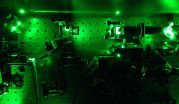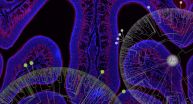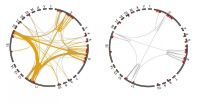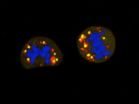NASA sees Hurricane Jimena's large eye
2015-08-31
(Press-News.org) NASA's Aqua satellite and NOAA's GOES-East satellites provided views of Hurricane Jimena that showed it maintained a large eye and powerful thunderstorms around it. On August 31, Jimena continued moving through the Eastern Pacific as a major hurricane.
An infrared image from NOAA's GOES-West satellite on August 31 at 8:00 a.m. EDT revealed that Hurricane Jimena's wide-eye continued to be cloud free. The GOES image also showed thick bands of powerful thunderstorms circling the eye.
The Atmospheric Infrared Sounder or AIRS instrument aboard Aqua gathers infrared data that shows temperatures. Data taken on August 31 at 10:59 UTC (6:59 a.m. EDT) was made into a false-colored image that revealed powerful thunderstorms with cloud top temperatures in excess of -81F/-63C/210K around the center of Hurricane Jimena. NASA research has shown that thunderstorms with cloud tops that cold and high in the troposphere have the potential to generate heavy rainfall.
The AIRS data also showed that sea surface temperatures around Jimena were warmer than 28 degrees Celsius (82.4 Fahrenheit). Warmer sea surface temperatures can help a storm intensify because they can increase evaporation and thunderstorm development. As the warm, moist air evaporates and rises, it condenses into clouds. In a hurricane, air rotates inward toward the storm's center then rises to higher altitudes. As the air rises it cools and condenses into clouds and rain, releasing heat (called latent heat). It is the cycle of evaporation and condensation powers a tropical cyclone.
NHC forecaster Cangialosi noted "Jimena is expected to more or less maintain its intensity during the next day or so while it remains over 28C water and in a very low wind shear environment." Tropical cyclones need sea surface temperatures of at least 26.6C/80F to maintain intensity.
NOAA's National Hurricane Center (NHC) on-line discussion said "the eye of the hurricane remains distinct and has a diameter of about 20 nautical miles, and the convective pattern is slightly asymmetric with cloud tops slightly warmer west of the eye.
On August 31 at 1500 UTC (11 a.m. EDT/5 a.m. HST), the center of Hurricane Ignacio was located near latitude 15.6 North and longitude 135.3 West. That's about 1,330 miles (2,145 km) east of Hilo, Hawaii. The estimated minimum central pressure is 936 millibars.
NHC reported Jimena's maximum sustained winds were near 150 mph (240 kph). Jimena is a category 4 hurricane on the Saffir-Simpson Hurricane Wind Scale. Little change in strength is expected during the next day or so, followed by slow weakening.
Jimena was moving toward the west near 16 mph (26 kph) and is forecast to turn to the west-northwest with a decrease in forward speed during the next couple of days.
For updated forecasts, visit NOAA's NHC website: http://www.nhc.noaa.gov.
INFORMATION:
[Attachments] See images for this press release:
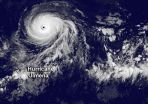
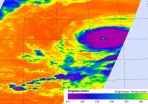
ELSE PRESS RELEASES FROM THIS DATE:
2015-08-31
A bill to improve the nutritional value of fast food restaurant meals marketed to children--like McDonald's Happy Meals--could have a wide enough impact to reduce calories, fat, and sodium, according to a new study led by researchers at NYU Langone Medical Center.
The study, which will publish in the American Journal of Preventive Medicine online on August 31, includes collaboration from NYU College of Global Public Health, NYU Wagner Graduate School of Public Service, and NYU Steinhardt School of Culture, Education, and Human Development.
The "Healthy Happy Meals" ...
2015-08-31
A team of scientists has successfully measured particles of light being "squeezed", in an experiment that had been written off in physics textbooks as impossible to observe.
Squeezing is a strange phenomenon of quantum physics. It creates a very specific form of light which is "low-noise" and is potentially useful in technology designed to pick up faint signals, such as the detection of gravitational waves.
The standard approach to squeezing light involves firing an intense laser beam at a material, usually a non-linear crystal, which produces the desired effect.
For ...
2015-08-31
In animals, numerous behaviors are governed by the olfactory perception of their surrounding world. Whether originating in the nose of a mammal or the antennas of an insect, perception results from the combined activation of multiple receptors located in these organs. Identifying the full repertoire of receptors stimulated by a given odorant would represent a key step in deciphering the code that mediates these behaviors. To this end, a tool that provides a complete olfactory receptor signature corresponding to any specific smell was developed in the Faculties of Science ...
2015-08-31
Researchers at the Babraham Institute have discovered a strong physical gene interaction network that is responsible for holding genes in a silencing grip during early development. In the same way that people can interact with others in close proximity, say within the same room, or others millions of miles apart, there are also short- and long-range interactions within the genome forming a three-dimensional configuration where different parts of the genome come into contact with each other. The research, reported online in Nature Genetics, presents how key decision-making ...
2015-08-31
Outpatient human immunodeficiency virus (HIV) health care facilities funded by the federal Ryan White HIV/AIDS Program (RWHAP) were more likely to provide case management, mental health, substance abuse and other support services than those facilities not funded by the program, according to an article published online by JAMA Internal Medicine.
RWHAP was established in 1990 to provide funds to states, metropolitan areas and clinics to increase access to high-quality HIV care and treatment for low-income, uninsured and underinsured individuals and families affected by ...
2015-08-31
Religious or spiritual considerations were discussed in 16 percent of family meetings in intensive care units and health care professionals only rarely explored the patient's or family's religious or spiritual ideas, according to an article published online by JAMA Internal Medicine.
Understanding how frequently discussions of spiritual concerns take place - and what characterizes them - is a first step toward clarity regarding best practices of responding to spiritual concerns in advanced illness.
Douglas B. White, M.D., M.A.S., of the University of Pittsburgh School ...
2015-08-31
Women with multiple sclerosis (MS) who intended to breastfeed their infants exclusively for two months had a lower risk of relapse during the first six months after giving birth compared with women who did not breastfeed exclusively , according to an article published online by JAMA Neurology.
About 20 percent to 30 percent of women with MS experience a relapse within the first three to four months after giving birth and there are no interventions for effective prevention of postpartum relapse. The effect of exclusive breastfeeding on postpartum risk of MS relapse is ...
2015-08-31
It was long believed that acquired immunity--a type of immunity mediated by T- and B-cells--had memory, meaning that it could learn from new pathogens, making subsequent reactions more effective, whereas innate immunity--which is mediated by macrophages and other types of cells that react to certain molecules typically associated with pathogens--did not. However, it gradually became clear that things were not so simple. Plants and insects, which only have innate immunity, also seem to have immunological memory. Further, it has been reported that herpes virus infection increases ...
2015-08-31
By changing the mouse model they use to study how the immune system responds to cancer, a team of researchers hopes to shift the focus for one emerging form of cancer immunotherapy back to the standard approach--relying on antigen-presenting dendritic cells--and away from the current upstart, macrophages.
Although macrophages, like dendritic cells, also take up antigens, they are more likely to degrade them than present them to T cells. The recent emphasis on macrophages stems, in part, from promising, but problematic, efforts to develop an effective macrophage-driven ...
2015-08-31
Cancer cells become addicted to glucose, which they use as their regular source of energy to grow and develop. Although this was observed over nine decades ago by the German physiologist, Otto Warburg; there is still not therapeutic strategy today that can effectively take advantage of this special energy requirement. The initial approach appears to be simple: the lack of glucose could specifically induce the death of cancer cells.
A new study by the Spanish National Cancer Research Centre Cell and Cancer Unit, headed by the Cell Division and Cancer group of the Spanish ...
LAST 30 PRESS RELEASES:
[Press-News.org] NASA sees Hurricane Jimena's large eye


